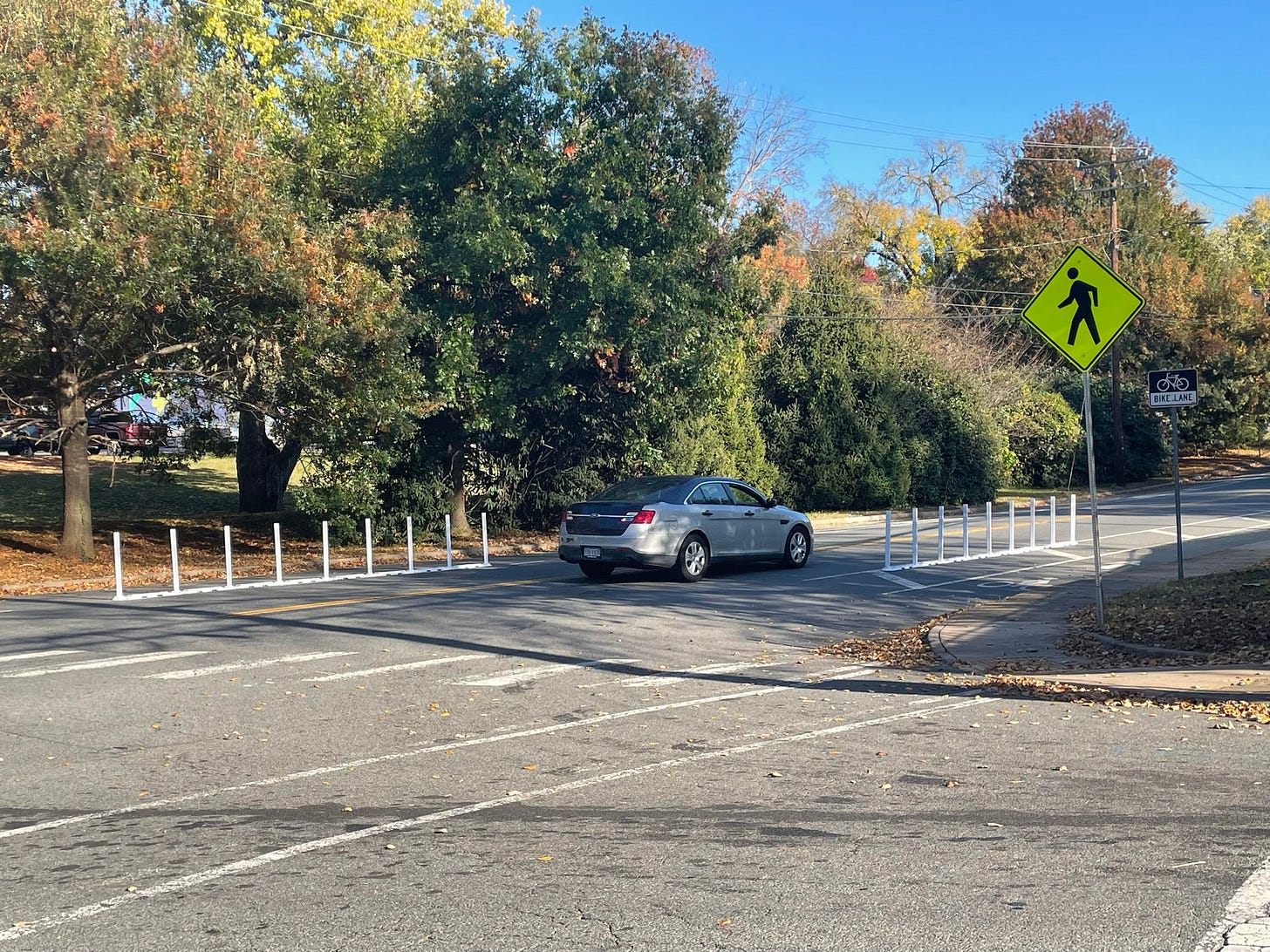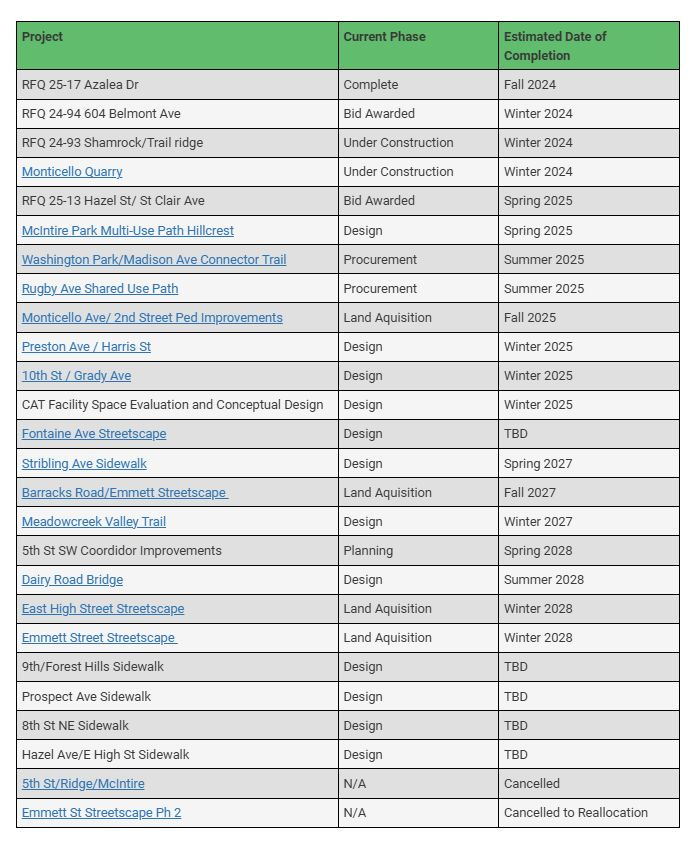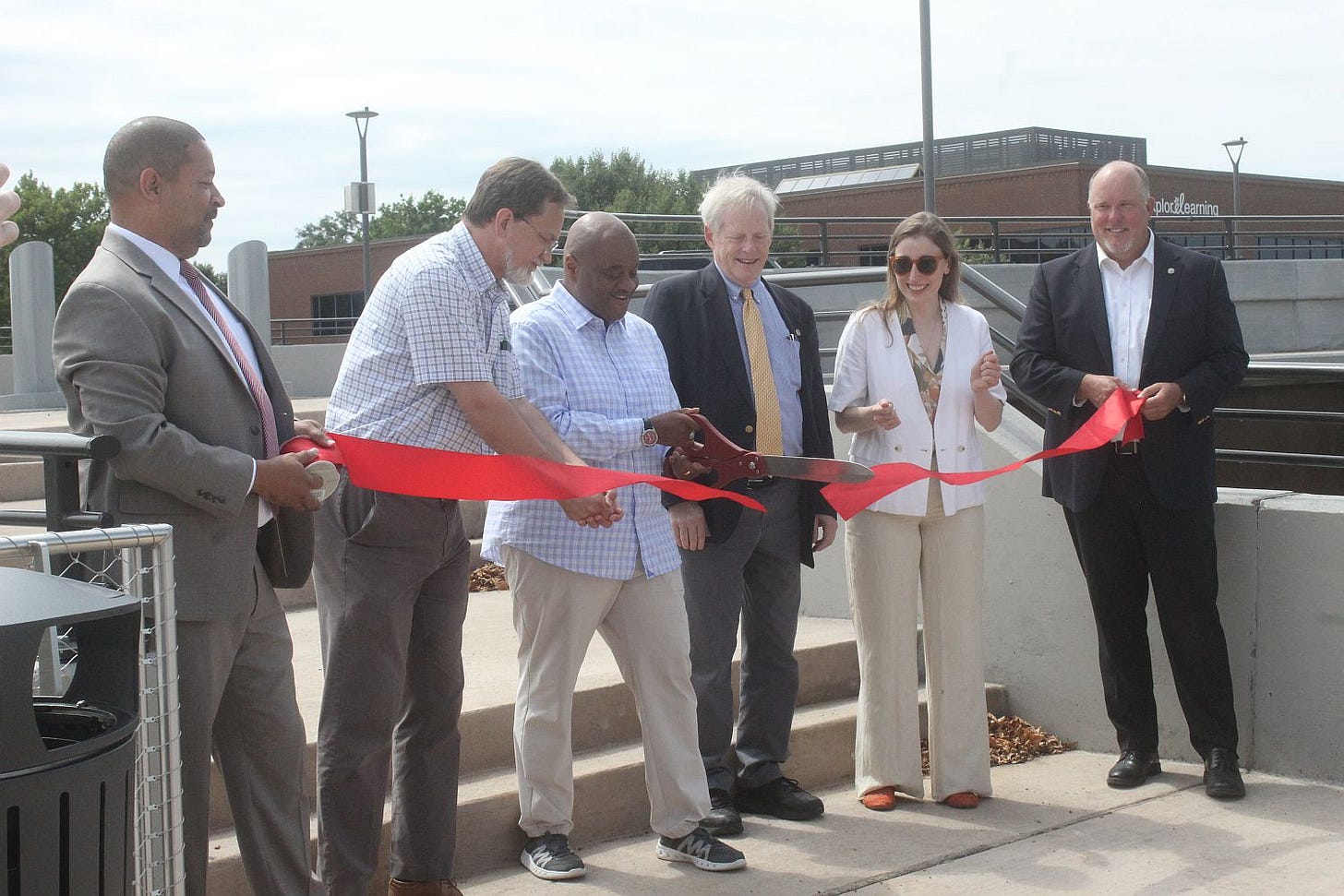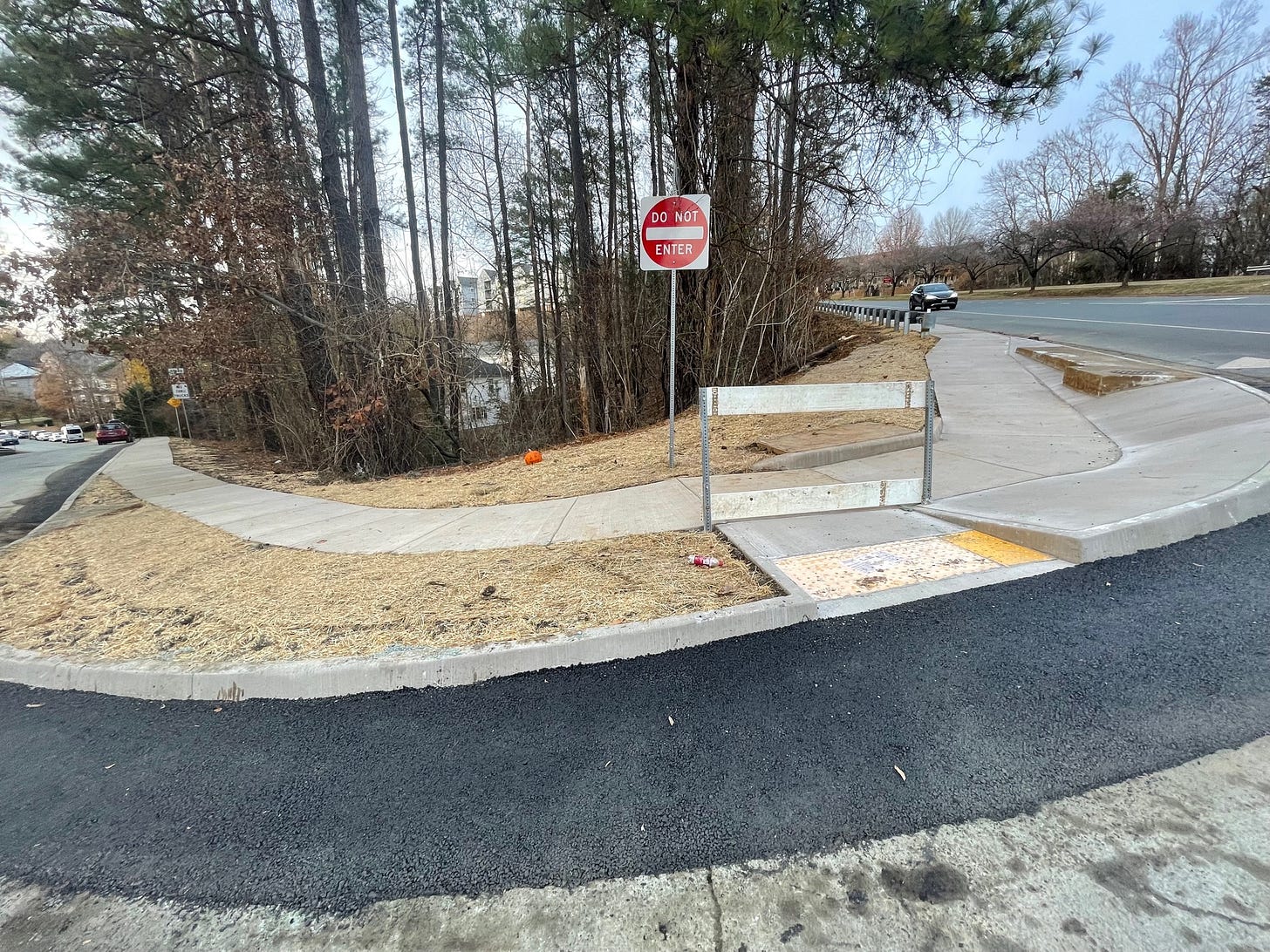Look Back Part Two: The Year in Transportation
An incomplete review of stories about how people get around the area
There are many editors who despise year in review pieces. One person told me yesterday they “don’t believe in them.” I am not like that. But then again I’m more of a reporter than an editor. I have a hard time condensing in a world where everything is part of a big picture.
Today’s second installment of this Look Back takes a look back at stories about mobility. Most but not all of the links go to stories posted on Information Charlottesville, the website that serves as the second rough draft of these stories that I write. When I began this chapter of my career four and a half years ago, the main point was to just get as much written as possible.
I’ve done that, building an audience for this Substack newsletter. There’s much less of an audience for Information Charlottesville but I am hoping to change that in 2025. More on that as this week progresses.
Town Crier Productions is a business. The money that comes in is used toward the information gathering venture that has come together over these past four and a half years. One particular story this year ended up costing a lot of money as I traveled across the country to follow three City Councilors and one Albemarle Supervisor as they went and looked at something related to a policy decision related to transportation. To channel Douglas Adams for a moment, I will not tell you which story just yet in order to cultivate a sense of suspense.
Anyway, let’s get to it.
Improving pedestrian safety
In a year where a lot happened in terms of transportation, the biggest story in mobility is an incredibly sad one.
Days after a woman was killed crossing Elliott Avenue after sunset on the evening of October 3, her death permeated much of Charlottesville City Council’s first meeting of that month.
“A 64 year old woman, Mamawa Samai, was killed in the incident,” said City Councilor Natalie Oschrin. “I hope I speak on behalf of all of us up here that we were heartbroken to learn of that, and that we are going to try to do what we can to continue making improvements to bike pedestrian infrastructure in this city.”

For many years, the city has struggled to build that infrastructure but a relatively new administration is putting together the structure to do a better job. This year, transportation planning staff put a new priority list for sidewalk construction based on previous studies.
“Looking at 2024 and beyond, the focus of transportation planning in the City will shift from responding to present-day concerns to more holistically aligning the City's goals and objectives with future actions and projects,” reads a staff report for Council’s July 1 work session on the new sidewalk priority list. “One of those areas where the City is focusing their efforts is to increase pedestrian movement and access through sidewalk improvements.”
I did not write up that summary so there is a gap in my knowledge. For more information, take a look at the city’s website from before the list was released. You can also watch the review here.
In November, James Freas, Charlottesville’s Deputy City Manager of Operations, said the city quickly installed plastic bollards at the intersection where Samai was fatally struck in order to draw more attention to the crossing.
“I want to acknowledge that those were the solutions that we could do quickly,” Freas said “Those are what we could do within a matter of days. But that doesn’t mean we are done with that work at this point in time.”
Freas said his staff is working to identify more permanent solutions that can be constructed within a year.
“The city manager has identified what we’re referring to as urgent infrastructure dollars that can be put towards these deployments very quickly,” Freas said.
Meanwhile, the city continues to build sidewalks including a section on Monticello Avenue north of Quarry Road that opened in December.
“We did that project internally trying to turn over a new leaf internally and show that we can do projects ourselves and help people appreciate that that can be done,” Sanders said.
Fixing Charlottesville’s transportation “deficiency”
Charlottesville also continued to contend with a recent history of being unable to complete major transportation projects. In April, Council learned how a state agency had declared them to be “deficient.”
“For years now, the City of Charlottesville has suffered – for many reasons – with the quality management of our locally-administered transportation program in partnership with the Virginia Department of Transportation (VDOT),” reads the staff report for the meeting.
Council got more details in May at a work session. In short, Charlottesville has managed its own transportation projects since 2006 and city staff took on more than it could handle. For instance, the Commonwealth Transportation Board awarded three Smart Scale projects in 2016 and additional ones in subsequent years.
As of May 6, the city was responsible for managing 29 projects with a total cost estimate of $157 million. Steven Hicks is the city’s public works director.
“Some are getting ready to go to construction and some haven’t even gotten started,” Hicks told Council.
To address the problem, the city now has a more structured project team in place. The idea is to also have a better relationship with VDOT as well as to offer the public more information about what’s happening with various projects.

Planning for the future
The body of elected officials that makes transportation decisions involving federal funding had a busy year. One decision related to a new design for the interchange of Fontaine Avenue and U.S. 29. The University of Virginia had concerns about what had been proposed and in March the Charlottesville Albemarle Metropolitan Planning Organization Policy Board approved a pair of signalized intersections.
The MPO is an entity of the Thomas Jefferson Planning District Commission, an organization that is also coordinating the creation of a road safety initiative known as Move Safely, Blue Ridge. The intent is to create a planning document that can be used to draw down federal funding for projects identified as addressing safety issues. One issue to watch in 2025 is what a new presidential administration will do and whether this process leads to anything. The Nelson County Board of Supervisors got an update in February.
“By developing this comprehensive safety action plan, we are going to render Nelson County and the region more broadly eligible for funding for implementations through SS4A, so this opens up a new pot of money potentially for projects in the future,” said Curtis Scarpignato, a planner with the Thomas Jefferson Planning District Commission.
The MPO also adopted a new long-range transportation plan after a public process that included very little public input. Here’s an introduction I wrote in April. I honestly forgot about this until I did the review. Here’s a link to the adopted plan.
“The Long-Range Transportation Plan is a fundamental document for our community,” reads the executive summary. “It states our region’s collective vision for the future of our transportation system, and it identifies projects that we anticipate our region will implement in the foreseeable future.”
There are a lot of transportation needs in the community for ways to improve safety and improve throughput. The Virginia Department of Transportation continued with a series of “pipeline studies” for the area around Old Ivy Road and Barracks Road. A survey was live in March for the Barracks Road section. More on these as 2025 develops.

Completed projects and those in the works
This summer the Virginia Department of Transportation opened a roundabout at the intersection of Hillsdale Drive and Hydraulic Road. The work on that and three other projects began in late February to improve efficiency in the area and to address safety concerns. One of the changes was to eliminate left-hand turn movements from Hydraulic Road to U.S. 29. In 2025 a pedestrian bridge across the highway will connect Stonefield with the Seminole Square Shopping Center.
Council also gave direction for the future District Avenue Roundabout that is funded but has some time until it goes to construction. Members of the Meadows neighborhood said they preferred an alternative that doesn’t allow traffic to come into their neighborhood. In August, Council supported an alternative that would send more vehicles onto those streets.
“The Best Buy site is zoned Node Mixed Use 8 and hopefully at some point that’s redeveloped to mix use,” said City Councilor Michael Payne. “You could have eight-plus stories of housing. That access point will be really important to residents who live there. The Meadows may continue to grow over time. Obviously Stonefield has apartments about to come online. Seminole Square has apartments planned.”
This was also the year work on the replacement of the Belmont Bridge was completed. An emergency contract was signed in March to allow Kimley-Horn to continue the project after a delay.
The total cost for the project is $38 million according to the Virginia Department of Transportation’s Six-Year Improvement Program with $33.8 million of that in construction.
“Belmont Bridge is a gateway into downtown,” said Steven Hicks, the city’s public works director. “This project is a major investment that will last a hundred years.”

The year in transit
After several years of waiting to have enough drivers and buses, Charlottesville Area Transit implemented the first phase of changes to routes with increased service on Route 4 and Route 6. Other phases will follow in the future and they’re all listed in a transit strategic plan that went through the public input process in the spring.
After a series of work sessions, Charlottesville City Council finally proceeded with a plan to pilot both battery-electric vehicles and hydrogen fuel vehicles as potential replacement buses for Charlottesville Area Transit. The idea was first floated in January and a decision was made in March.
In April, a Danish company called Topsoe announced they would be building a factory in Chesterfield to build some of the components necessary for hydrogen fuel.
“The factory will manufacture advanced, energy efficient Solid Oxide Electrolyzer Cells (SOEC) that are essential to the efficient production of clean hydrogen and derivatives like eAmmonia and eMethanol,” reads an April 19 press release.
In May, a delegation of officials from Albemarle and Charlottesville traveled to Champaign-Urbana, Illinois, to see how the Mass Transit District there has incorporated a dozen buses fueled by hydrogen into their fleet. The bus system there serves two cities as well as the University of Illinois. A second trip took place in October, but I only wrote and recorded a podcast about the first.
In September, the company purchased 57 acres for $5 million for the factory according to the Greater Richmond Partnership who wrote up a Richmond BizSense article.
In 2024, both Albemarle County and Charlottesville opted to join the Charlottesville Albemarle Regional Transit Authority.
Looking ahead to 2025, the Virginia Department of Rail and Public Transportation will launch a new east-west service from Harrisonburg to Virginia Beach called the Tidewater Current.
Another thing to look for in January will be the release of Smart Scale scores. Charlottesville did not seek any, but Albemarle County put in a total of eight requests.

Other transportation tidbits:
In 2023, Albemarle County asked VDOT to conduct a study for a through-truck restriction on Plank Road. The public comment period got underway in early February
The Virginia Passenger Rail Authority reported increased ridership on all four Amtrak corridors in Virginia including the Northeast Regional. (read the story)
Nelson County Supervisors called for a study of speed limits on U.S. 29 near Lovington in January.
Nelson County also received $2.5 million from VDOT for pedestrian improvements in Lovingston. (read the story)
Albemarle County launched a transportation dashboard in July to help people find out the status of various projects. (read the story)
Several roadways in Charlottesville had their functional classification change, alarming some in the Woolen Mills who did not want to see some of their roads upgraded from Local Road to Minor Collector. (read one of the stories)
This is not a complete list by any means. I’ve only made it through August in my search but I need to get this project moving. There are a couple of transportation related stories that I’ll add in other editions. The plan is to keep putting these out through Saturday before getting back to normal with the Week Ahead on Sunday and the return to normal newsletters on Monday.
There’s no sponsor today because the arrangement with an internet company is now over. I was going to announce what’s coming next but I’m not ready to do that just yet. Soon, though. Soon.





Thank you so very much for all you do! I appreciate the 2024 yearn review.FYI,I have had to stop drivingfor a medical reason, for six. months, andI have been using the bus and my own two feet to get around town. It's been great, and I plan to keep doing so even when I can drive again. One service I could use is a service that exists in Richmond and somewhere in Alaska: a dog bus to get my two dogs to their respective doggy day care sites.I am now relying on friends for that...